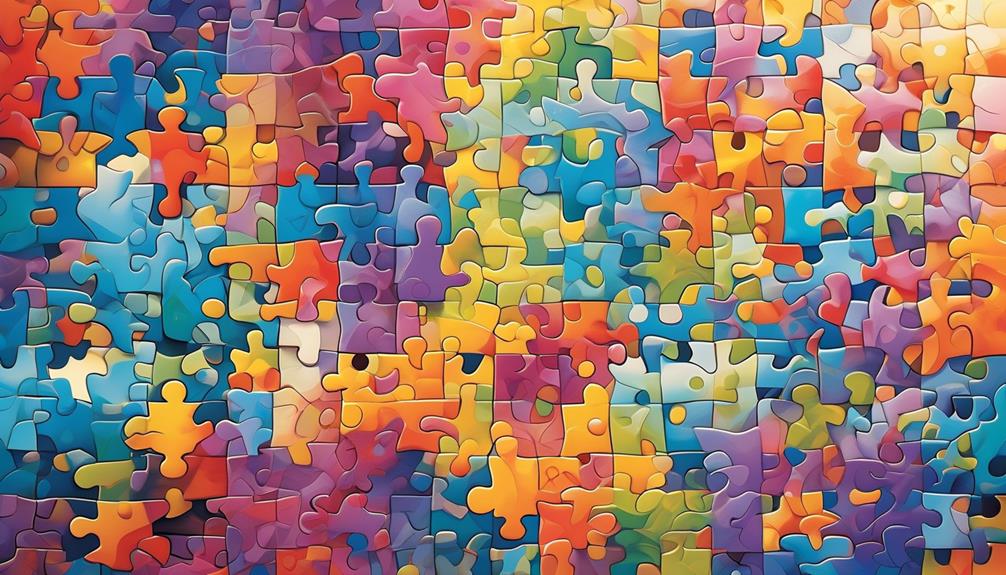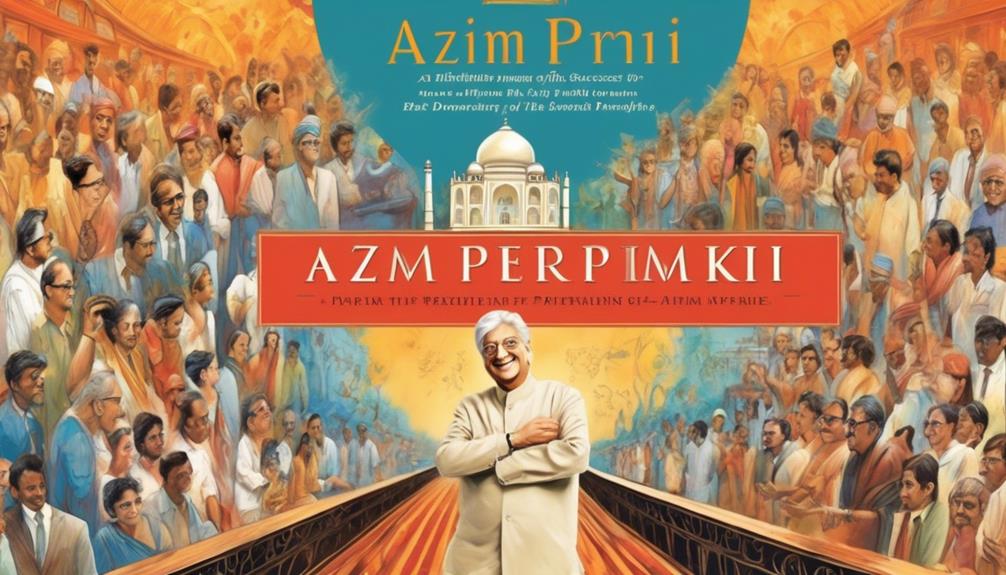It’s evident that certain writers have the remarkable ability to influence our lives significantly. However, a specific American author stands out by elevating this influence to an unprecedented degree. The power of his words can alter our way of thinking, enhance our efficiency, and lead us on a path to success.
Yes, I'm talking about the renowned Stephen Covey. With his groundbreaking book, 'The 7 Habits', Covey has become a household name in the world of personal development. His principles, such as proactivity, prioritization, and synergy, have revolutionized the way we approach life and work.
Through his insightful quotes, Covey continues to inspire and motivate millions of individuals, reminding us of the importance of self-improvement and living a purposeful life.
Key Takeaways
- Stephen Covey emphasizes the importance of proactivity and prioritization in achieving a purposeful life.
- Understanding and empathy are crucial in building meaningful relationships and fostering a more compassionate world.
- Cultivating understanding and perspective involves active listening, self-awareness, and recognizing the importance of different viewpoints.
- Synergy and collaboration are essential for problem-solving and team building, tapping into collective intelligence and creativity.
The Power of Proactivity
When we take control of our actions and choices, we unleash the powerful force of proactivity in our lives. Self-awareness plays a crucial role in understanding the importance of proactivity. It involves being conscious of our thoughts, feelings, and behaviors, and how they impact our lives and the lives of those around us.
Being self-aware allows us to recognize the areas where we may be reactive instead of proactive. It helps us identify our strengths and weaknesses, enabling us to make better choices and take intentional action towards our goals. By understanding ourselves better, we can align our actions with our values and priorities, leading to a more fulfilling and purposeful life.
Our mindset also plays a significant role in proactivity. A proactive mindset is characterized by a belief in personal responsibility and the ability to influence outcomes. It's about taking ownership of our circumstances and focusing on what we can control, rather than being victimized by external factors.
Putting First Things First

When it comes to managing our time effectively, it's important to remember that it's not just about getting things done, but also about prioritizing the right tasks.
Stephen Covey's concept of 'Putting First Things First' reminds us to focus on what truly matters and align our actions with our values and goals.
Time Management Techniques
To effectively manage our time and prioritize important tasks, Stephen Covey offers valuable insights and techniques in his renowned book, 'The 7 Habits of Highly Effective People.' Here are four time management techniques that can help us become more productive and efficient:
- Time Blocking: This technique involves scheduling specific blocks of time for different tasks or activities. By allocating time for each task, we can focus our attention and avoid distractions.
- The Pomodoro Technique: This method suggests breaking work into 25-minute intervals, called 'pomodoros,' followed by short breaks. This helps maintain focus and prevents burnout.
- Prioritization: Covey emphasizes the importance of identifying and focusing on tasks that align with our goals and values. By prioritizing our activities, we can ensure that we're spending our time on what truly matters.
- Eliminating Time Wasters: Covey advises identifying and eliminating activities that don't contribute to our goals or well-being. This allows us to free up time for more meaningful pursuits.
Prioritizing Daily Tasks
With a solid foundation in time management techniques, we can now shift our focus to the crucial task of prioritizing daily activities, ensuring that we put first things first. Effective goal setting and task prioritization techniques are essential for maximizing productivity and achieving success. To help you prioritize your daily tasks effectively, here is a simple yet powerful tool:
| Importance | Urgency | Task |
|---|---|---|
| High | High | Important & Urgent |
| High | Low | Important |
| Low | High | Urgent |
| Low | Low | Not Important |
Seek First to Understand
Let's dive into the subtopic of 'Seek First to Understand' and explore the key points it entails.
First, we'll discuss active listening techniques, which involve fully engaging with the speaker and understanding their message.
Next, we'll delve into the importance of empathy and understanding, as these qualities allow us to connect on a deeper level and foster meaningful relationships.
Lastly, we'll highlight the significance of perspective, recognizing that everyone sees the world through their own unique lens, and how seeking to understand different perspectives can lead to more open-mindedness and growth.
Active Listening Techniques
We can enhance our communication skills by practicing active listening techniques, such as seeking first to understand. Active listening strategies are essential for effective communication.
Here are four techniques that can help us become better active listeners:
- Pay attention: Give the speaker your full focus and avoid distractions. Maintain eye contact and nod or provide verbal cues to show your engagement.
- Show empathy: Try to understand the speaker's perspective and emotions. Validate their feelings and provide support.
- Avoid interruptions: Wait for the speaker to finish their thoughts before responding. Interrupting can make the speaker feel unheard and devalued.
- Ask clarifying questions: Seek clarification to ensure you understand the speaker's message accurately. This shows your genuine interest and helps prevent miscommunication.
Empathy and Understanding
To truly understand others, we must first embrace empathy and seek to understand their perspective and emotions. Empathy is the ability to put ourselves in someone else's shoes and truly understand their feelings and experiences. It allows us to connect with others on a deeper level and build meaningful relationships. Cultivating understanding requires active listening, open-mindedness, and a willingness to learn from others. Empathy exercises can help us develop this skill, such as practicing active listening, reflecting on our own biases, and seeking diverse perspectives. By actively seeking to understand others, we can foster a sense of empathy and create a more inclusive and compassionate world.
| Empathy Exercises | Cultivating Understanding |
|---|---|
| Practice active listening | Be open-minded |
| Reflect on biases | Seek diverse perspectives |
| Put yourself in someone else's shoes | Learn from others' experiences |
| Show genuine interest in others | Practice empathy in daily interactions |
| Cultivate self-awareness | Foster inclusive and compassionate attitudes |
Importance of Perspective
Understanding others requires not only empathy, but also a recognition of the importance of perspective, as we seek to truly grasp the unique viewpoints and experiences that shape their understanding of the world.
The power of perception can't be underestimated, as it influences how we interpret and respond to the world around us. Shifting perspectives allows us to break free from our own limited understanding and gain a broader view of the world. It opens up possibilities for growth, learning, and connection.
Synergize for Success

By harnessing the power of synergy, we can unlock the pathway to success. Synergy is the art of collaborative problem solving and team building. It's the ability to bring together diverse perspectives, skills, and ideas to create something greater than the sum of its parts.
When we synergize, we tap into the collective intelligence and creativity of the team, leading to innovative solutions and improved outcomes.
Collaborative problem solving is essential in today's complex and interconnected world. No single individual has all the answers or expertise. By working together, we can pool our knowledge and skills to tackle challenges more effectively. Synergy allows us to leverage the different strengths and perspectives of team members, leading to better decision-making and problem-solving outcomes.
Team building is another crucial aspect of synergy. When individuals come together as a team, they can accomplish far more than they could on their own. Building strong relationships, fostering open communication, and creating a sense of trust and shared purpose are essential for effective teamwork. Through synergy, teams can achieve higher levels of productivity, creativity, and overall success.
Sharpen the Saw

After synergizing for success, the next step is to sharpen the saw by focusing on personal growth and development. This is the phase where we take care of ourselves, ensuring that we're at our best physically, mentally, emotionally, and spiritually.
Here are four key areas to consider for personal growth and self-care:
- Physical Well-being: Taking care of our bodies is essential for overall well-being. Regular exercise, proper nutrition, and sufficient rest are vital for maintaining our physical health.
- Mental Stimulation: Engaging in activities that challenge our minds helps us grow intellectually. Reading books, learning new skills, and solving puzzles or brainteasers are great ways to keep our minds sharp and expand our knowledge.
- Emotional Balance: Nurturing our emotional well-being is crucial for personal growth. This involves practicing self-awareness, managing stress effectively, and cultivating healthy relationships with others.
- Spiritual Nourishment: Connecting with our inner selves and finding meaning in life is an integral part of personal growth. Engaging in activities that align with our values, such as meditation, prayer, or spending time in nature, can help nurture our spiritual well-being.
Begin With the End in Mind

To achieve success and fulfillment, it's crucial to start with a clear vision of our desired outcomes and work towards them intentionally. This is where the concept of 'Begin With the End in Mind' comes into play. Stephen Covey, the famous American author of 'The 7 Habits', emphasizes the importance of setting goals and having a long-term vision.
Goal setting is an essential step in creating a roadmap for our lives. By defining our objectives clearly, we can align our actions with our desired outcomes. Having a long-term vision allows us to see beyond the immediate challenges and setbacks. It helps us stay focused on what truly matters and allows us to make decisions that align with our ultimate goals.
When we begin with the end in mind, we're more likely to make purposeful choices that lead us closer to our desired results. It helps us prioritize our time and energy, ensuring that we're investing in activities that contribute to our long-term success and fulfillment.
Think Win-Win

When we have a clear vision of our desired outcomes and prioritize collaboration over competition, we can embrace the concept of 'Think Win-Win'. This mindset encourages us to seek solutions that benefit all parties involved, fostering mutual success and creating a positive impact.
Here are four reasons why adopting a collaborative mindset and striving for mutual success is essential:
- Building Strong Relationships: By seeking mutually beneficial outcomes, we cultivate trust, respect, and empathy in our relationships. This foundation enables open communication and cooperation, leading to stronger partnerships and increased productivity.
- Expanding Opportunities: When we approach situations with a win-win mindset, we open ourselves up to a wider range of possibilities. By focusing on collaboration rather than competition, we can uncover creative solutions that may have otherwise been overlooked, leading to new opportunities for growth and success.
- Creating a Positive Work Environment: Encouraging a collaborative mindset fosters a positive work culture where individuals feel supported and valued. This environment promotes teamwork, innovation, and a sense of belonging, enhancing overall job satisfaction and employee morale.
- Driving Long-Term Success: Embracing a win-win approach allows us to build sustainable, long-term success. By seeking solutions that benefit all parties involved, we cultivate mutually beneficial partnerships that can withstand challenges and fluctuations, leading to continued growth and prosperity.
Frequently Asked Questions
How Old Was Stephen Covey When He Wrote 'The 7 Habits'?
When Covey wrote 'The 7 Habits', he was in his early forties.
His educational background includes a Bachelor's degree in Business Administration from the University of Utah, an MBA from Harvard, and a doctorate in Religious Education from Brigham Young University.
Covey's age and diverse educational experiences likely contributed to the depth and breadth of his insights in the book.
What Was Stephen Covey's Educational Background?
We are often curious about the educational background of influential individuals like Stephen Covey.
When it comes to Stephen Covey, his educational background played a significant role in shaping his work on personal development. Covey earned a Bachelor's degree in Business Administration from the University of Utah, followed by an MBA from Harvard University.
His academic foundation, combined with his experiences and insights, paved the way for his impactful contributions to the field of personal development.
Did Stephen Covey Receive Any Awards or Recognition for His Work?
Stephen Covey's impact on personal development earned him numerous awards and recognition throughout his career.
His groundbreaking book, 'The 7 Habits of Highly Effective People,' became a bestseller and continues to inspire individuals worldwide.
Covey received prestigious awards such as the International Entrepreneur of the Year and the National Fatherhood Award.
His work has touched the lives of millions, making him a highly respected figure in the field of personal growth and leadership.
How Did Stephen Covey Come up With the Idea for 'The 7 Habits'?
We were curious about how Stephen Covey came up with the idea for 'The 7 Habits.'
His influences and experiences played a significant role in shaping his ideas. Covey drew inspiration from literature, philosophy, and his own personal experiences.
He wanted to create a framework that would help individuals achieve personal and professional success.
The impact of 'The 7 Habits' has been profound, empowering countless people to take control of their lives and strive for excellence.
Are There Any Other Books Written by Stephen Covey Apart From 'The 7 Habits'?
Yes, there are other books written by Stephen Covey apart from 'The 7 Habits'.
His impact on personal development extends beyond this famous work.
Covey's other notable books include 'The 8th Habit: From Effectiveness to Greatness' and 'Principle-Centered Leadership'.
These books delve into further aspects of Covey's philosophy, offering valuable insights and strategies for personal growth and leadership.
Covey's writings continue to inspire and guide individuals in their pursuit of mastery and success.
:How do Stephen Covey’s quotes compare to Adam Smith’s quotes in terms of inspiring and motivating individuals?
Stephen Covey’s quotes focus on personal development and mindset, while famous Scottish economist Adam Smith quotes often emphasize the importance of self-interest and free markets. Both provide unique insights into inspiring and motivating individuals, but from different perspectives.
Conclusion
So, in conclusion, Stephen Covey's quotes from his book 'The 7 Habits' highlight important principles for personal and professional success.
By focusing on proactivity, prioritizing tasks, seeking understanding, collaborating with others, and continuously improving oneself, we can achieve our goals and live a fulfilled life.
While some may argue that these habits are easier said than done, it's through consistent practice and dedication that we can truly reap the benefits and experience lasting positive change.
Fritz is a writer whose humor and wit infuse life into words. His creativity, combined with a profound love for the English language, makes him a unique voice at afterQuotes. Fritz’s engagement with books, culture, and social media adds depth to his contributions, making them resonate with our diverse audience.









